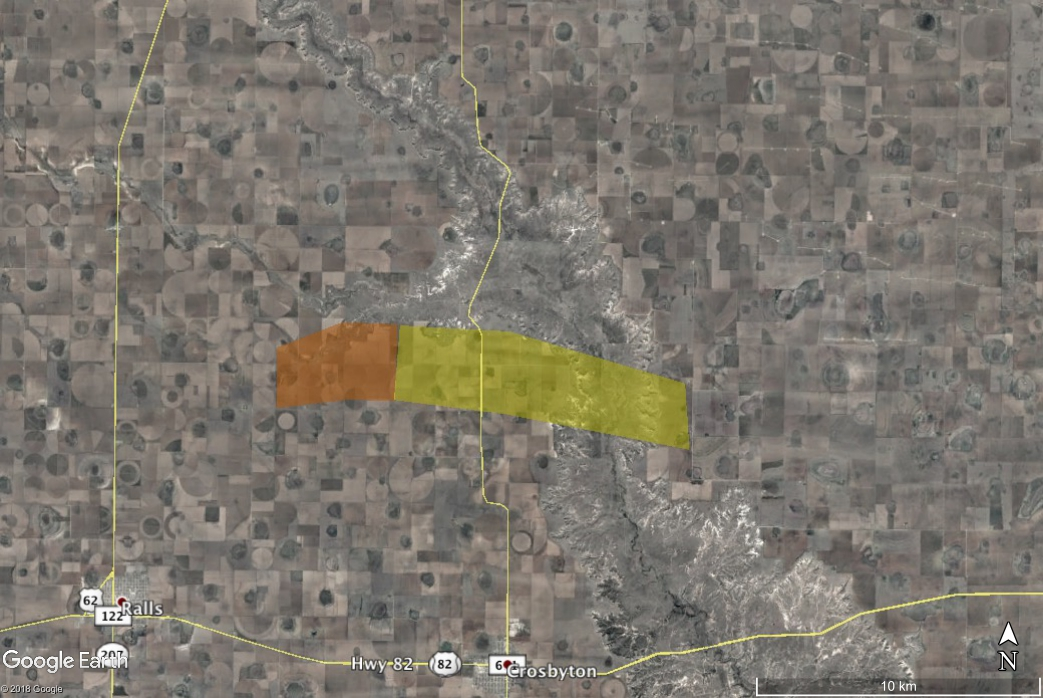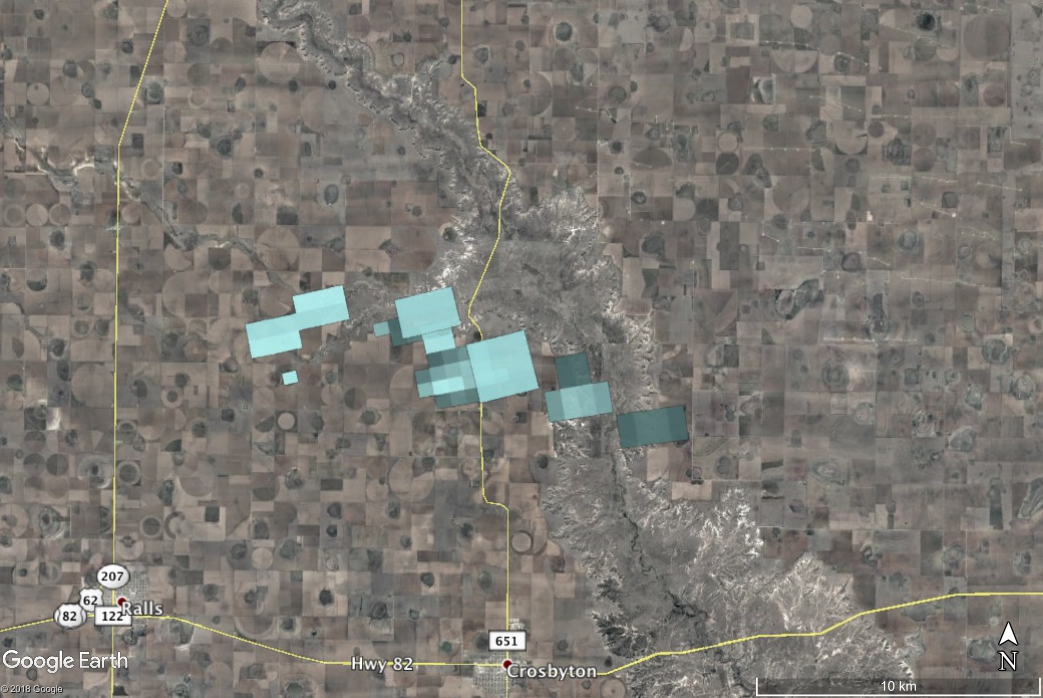DATE/TIME2/18/2016 @ 03:43 UTC2/18/2016
|
LAT/LONG33.754207 • -101.248789
33.754207
|

This meteorite fall was fireball that occurred at 9:44 PM local time on 17 February 2016, or 18 Feb 2016 0344 UTC. The fireball was seen across four states and 39 eyewitnesses reported it to the American Meteor Society. Unusually for a meteorite fall, no eyewitnesses reported hearing sonic booms but that is consistent with the low total mass of this event.
At least one meteorite has been recovered from this event.
This event is recorded as American Meteor Society event number 635 for 2016. Signatures of falling meteorites can be found in imagery from two nearby weather radars. In the NEXRAD weather radar network operated by NOAA, the KVAX (Moody AFB, GA) and KJAX (Jacksonville, FL) radars record signatures of falling meteorites.
The first appearance of falling meteorites on radar occurs at 03:46:00 UTC and 7,265 m above sea level (ASL) in the 0343 UTC data set for the KAMA radar in the 1.5 degree elevation radar sweep. Signatures consistent with falling meteorites appear in a total of five radar sweeps from the two radars, with a final signature appearing at 03:51:37 UTC.
Calculations of mass and total number of meteorites based on weather radar data indicate that this is a small meteorite fall, approximately 0.1x the total mass of the Park Forest, IL meteorite fall in 2003. The fragmentation behavior of the Mount Blanco fall is typical for an average meteorite, based on comparison with other meteorite falls seen in weather radar data.
Meteorites recovered from this event have been classified by the Meteoritical Society as an L5 chondrite.
This meteorite fall occurred approximately 10.5 hours after a widely reported fireball seen over southern France and described by the American Meteor Society as event number 631 for 2016. To date no meteorites have been reported for the fireball in France, so it is unknown if the two fireballs are related.
